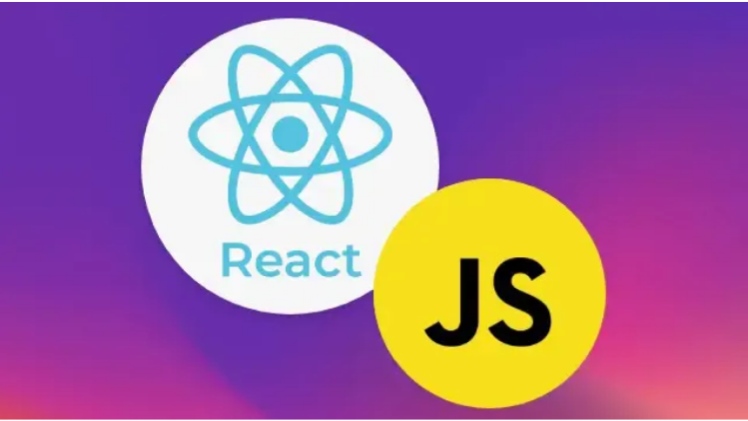Adoption of React for Diverse Platforms
React’s evolution spans beyond web development, extending into diverse platforms such as mobile through React Native and even emerging platforms. React development companies have swiftly embraced this versatility, recognizing the potential for unified and scalable solutions. They leverage React Native’s power to craft robust mobile applications, sharing codebases between web and mobile, thus minimising development time and costs. This expansion beyond traditional web-based applications has redefined how businesses approach cross-platform development, with React at the forefront, providing a consistent development experience across various platforms.
Focus on Component-Based Architectures
React’s cornerstone principle of component-based architecture has catalysed a paradigm shift in modern development methodologies. React development company meticulously utilises reusable components, enhancing scalability, maintainability, and code reusability. By encapsulating functionality into individual components, these companies streamline development processes, expedite feature deployment, and facilitate collaborative work. This shift has ushered in a new era where React’s modular structure enables teams to build and manage complex applications more efficiently, fostering innovation while maintaining code quality and consistency.
Integration of State-of-the-Art Technologies
React’s versatility extends beyond its core framework as React development companies continually integrate state-of-the-art technologies to augment development capabilities. Technologies like GraphQL for efficient data fetching, Redux for centralized state management, and TypeScript for static typing have become integral components. React companies harness these technologies to enhance development speed, code maintainability, and overall application performance. By seamlessly integrating these tools, they ensure robust, scalable, and adaptable solutions that meet the evolving demands of modern applications.
Embracing Server-Side Rendering and Static Site Generation
The evolution of React development companies has witnessed a significant embrace of server-side rendering (SSR) and static site generation (SSG) to optimize web application performance. SSR and SSG methodologies cater to improved SEO, faster page loads, and enhanced user experiences. React development companies strategically adopt these techniques, leveraging frameworks like Next.js to render React components on the server, minimising time-to-interaction and improving perceived performance. This shift towards pre-rendering content enhances search engine discoverability, accessibility, and overall user engagement, driving the evolution of React-based applications towards better performance and user-centric experiences.
Focus on Performance Optimization and Bundle Size Reduction
React development companies prioritize performance optimization, employing various strategies to reduce bundle sizes and enhance overall application performance. Through code splitting, lazy loading, and tree shaking techniques, these companies minimize bundle sizes, leading to faster loading times and improved user experiences. Furthermore, optimization approaches like memoization and efficient state management contribute to smoother interactions and responsive applications. By focusing on performance enhancements, React development companies ensure that applications built on the framework are not only feature-rich but also deliver exceptional speed and responsiveness, meeting the high expectations of modern users.
Adoption of Reactive UI Libraries and Design Systems
The integration of reactive UI libraries such as Material-UI, Chakra UI, and others marks a significant trend in React development. These libraries offer pre-designed, customizable components that facilitate rapid application development while ensuring consistency in design and user experience. React development companies leverage these libraries to expedite UI development, maintain design consistency, and create visually appealing interfaces. By adopting design systems and reactive UI libraries, they streamline the UI/UX design process, allowing for quicker prototyping and iterative improvements, ultimately leading to more polished and user-friendly applications.
Shift Towards Full-Stack React Development
There’s a notable shift towards employing React not only for frontend development but also as a fundamental part of full-stack development. Frameworks like Next.js enable React development companies to seamlessly integrate backend functionalities, supporting server-side rendering and API routes. This convergence of frontend and backend using React streamlines development workflows, allowing for faster iterations, enhanced code sharing, and a cohesive development experience. Embracing full-stack React development empowers companies to build end-to-end solutions efficiently, meeting both frontend and backend requirements with a unified technology stack.
Focus on Accessibility and Inclusive Design
React development companies increasingly prioritise accessibility and inclusive design practices, ensuring that applications cater to diverse user needs. They integrate accessibility features, adhere to web content accessibility guidelines (WCAG), and implement inclusive design principles. By emphasising keyboard navigation, screen reader compatibility, proper semantic HTML, and accommodating various disabilities, these companies ensure that their applications are usable by a wide range of users. This commitment to accessibility aligns with ethical and legal considerations while reflecting an inclusive approach that values accessibility as a fundamental aspect of application design and development.
Conclusion
The evolution of React development companies stands as a testament to their adaptability and innovation in the dynamic landscape of technology. From expanding React’s reach across diverse platforms to embracing component-based architectures and integrating cutting-edge technologies, these companies exemplify a commitment to staying at the forefront of innovation. Their focus on performance optimization, seamless full-stack development, and inclusive design signifies a holistic approach to crafting applications that are not just feature-rich but also efficient, accessible, and future-ready. This evolution signifies a journey towards more scalable, user-centric, and versatile solutions driving the realm of modern software development.

